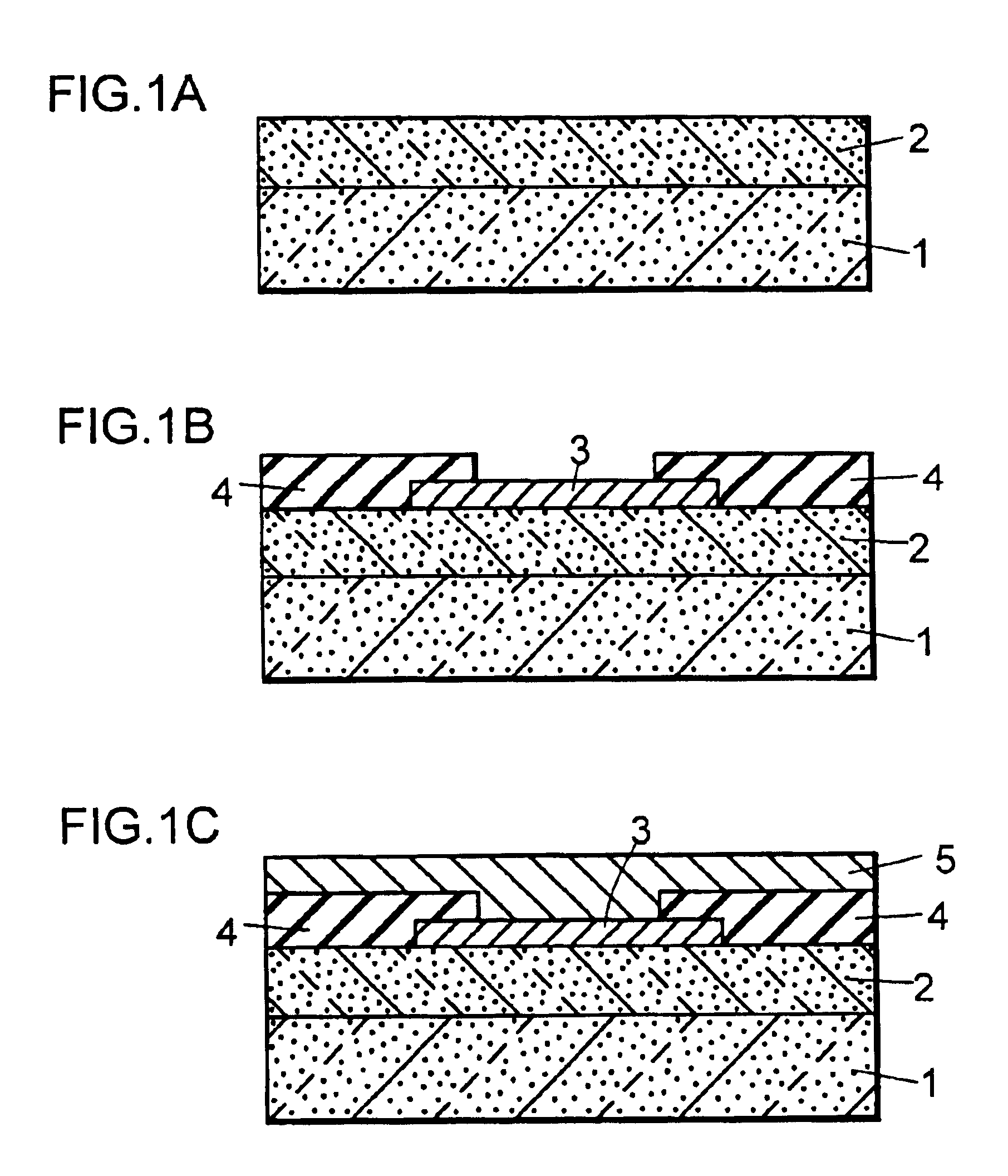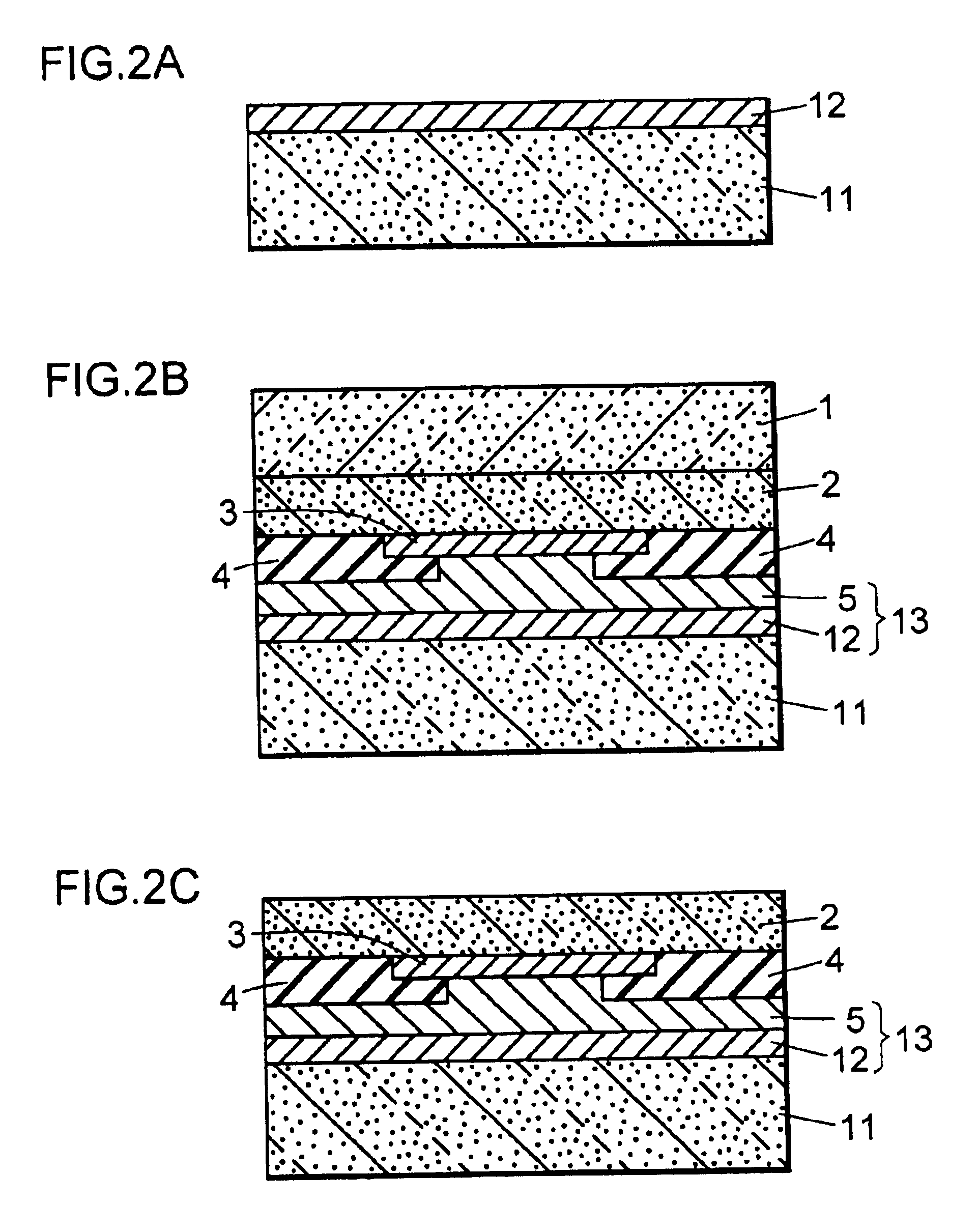Method for producing a nitride semiconductor element
a technology of nitride and semiconductor elements, which is applied in the direction of semiconductor lasers, semiconductor laser structural details, lasers, etc., can solve the problems of limited structure of nitride semiconductor elements, difficulty in producing a bulk of single crystals, sapphire is a low thermal conductivity insulating material, etc., to reduce the area cutting off light, reduce the size of the n-type terminal, and improve the outgoing efficiency of ligh
- Summary
- Abstract
- Description
- Claims
- Application Information
AI Technical Summary
Benefits of technology
Problems solved by technology
Method used
Image
Examples
embodiment 1
[0104]The following description will describe a process of producing an embodiment of the nitride semiconductor element according to the invention with reference to the drawings.
[0105]The nitride semiconductor 2 including at least a second conductive type nitride semiconductor layer, a light-emitting layer, a first conductive type nitride semiconductor layer is grown on a different material substrate 1 such as sapphire (FIG. 1A). Subsequently, a first terminal 3 (p-type terminal, for example) is formed on the nitride semiconductor layers. Next, a first insulating protect layer 4 is formed on an opening portion, or an exposed portion of the nitride semiconductor (FIG. 1B). Further, a conductive layer 5 for alloying at attachment is formed (FIG. 1C). It is preferable that the conductive layer has a three-layer structure composed of an intimate-contact, a barrier layer, and a eutectic layer. On the other hand, a supporting substrate 11 is prepared. It is preferable that a conductive la...
embodiment 2
[0137]A nitride semiconductor 2 is formed on or above a different material substrate 1, as a second conductive type nitride semiconductor layer, a light-emitting layer, a first conductive type nitride semiconductor layer successively. First, the surface is etched partly by RIE, etc. Subsequently, it is annealed under atmosphere with oxygen. A first terminal with high reflectivity and capable of ohmic contact with the first conductive type nitride semiconductor layer is pattern-formed on the surface, which is not etched. Next, a first insulating protect layer is formed on the part, on where the first terminal is not formed. SiO2, etc. can be employed as material of the protect layer, and a multi-layer structure of them can also be employed. A metal layer with high reflectivity such as Al can be formed further on there. Then, a conductive layer composed of an intimate layer, a barrier layer, and an eutectic layer, can be formed on the whole of wafer or the part, where is not etched. T...
embodiment 3
[0140]In the nitride semiconductor element of this embodiment, the attachment process is performed twice (FIG. 13). A method for producing a nitride semiconductor element having at least a first terminal, a nitride semiconductor with a light-emitting layer, and a second terminal on or above a supporting substrate successively, includes: a first step for growing the nitride semiconductor with the light-emitting layer on or above a first substrate; subsequently, a second step for eliminating the first substrate and forming an exposed surface of the nitride semiconductor; subsequently, a third step forming a asperity on the exposed surface; subsequently, a forth step for attaching the supporting substrate to the exposed surface of the nitride semiconductor layer with interposing; and subsequently a fifth step for eliminating the second substrate.
[0141]In the first step, the second substrate is attached to the growth surface of the nitride semiconductor layer with interposing the second...
PUM
| Property | Measurement | Unit |
|---|---|---|
| refractive index | aaaaa | aaaaa |
| wavelength of light | aaaaa | aaaaa |
| wavelength | aaaaa | aaaaa |
Abstract
Description
Claims
Application Information
 Login to View More
Login to View More - R&D
- Intellectual Property
- Life Sciences
- Materials
- Tech Scout
- Unparalleled Data Quality
- Higher Quality Content
- 60% Fewer Hallucinations
Browse by: Latest US Patents, China's latest patents, Technical Efficacy Thesaurus, Application Domain, Technology Topic, Popular Technical Reports.
© 2025 PatSnap. All rights reserved.Legal|Privacy policy|Modern Slavery Act Transparency Statement|Sitemap|About US| Contact US: help@patsnap.com



